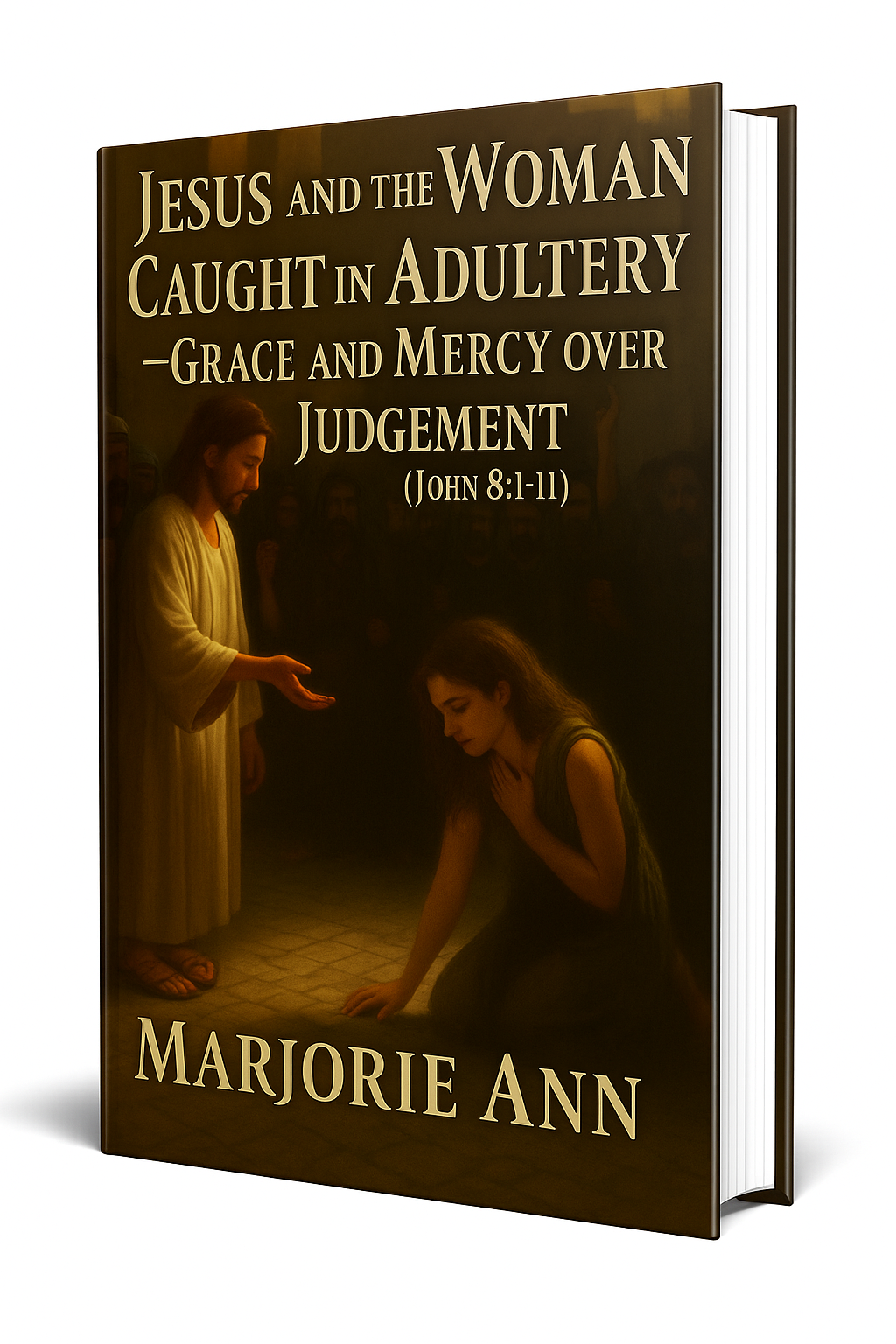Turning Your Favorite Bible Verses Into Worship Songs
You love Scripture, and you love worship. Maybe you’ve hummed a melody to a verse that grabbed your heart and thought, “This should be sung.” You can do more than think about it—you can turn your favorite Bible verses into worship songs that bless your congregation, deepen your own prayer life, and help others memorize God’s Word. In this guide you’ll find practical, pastoral, step-by-step direction for creating songs from Scripture. You’ll learn how to prepare your heart, choose verses, shape text for melody, develop rhythm and chords, and lead the songs in worship. If you’ve ever wanted to try creating scripture songs from start to finish, this is your roadmap to begin.
Why write worship songs directly from Scripture?
When the church sings God’s Word back to Him, two things happen: your heart is formed by the truth, and the congregation worships on the firm foundation of Scripture. The Apostle Paul tells the church to “let the word of Christ dwell in you richly” so you teach and admonish one another in wisdom through psalms, hymns, and spiritual songs (Colossians 3:16). Writing worship songs directly from the Bible helps ensure theological faithfulness and makes Scripture memorable. You benefit personally when the words you sing are precisely God’s words or faithful paraphrases. As you begin this journey, remember that worship songwriting is both an art and an act of obedience.
Preparing your heart: prayerful dependence and discernment
Before you open your laptop or pick up a guitar, prepare spiritually. Offer yourself as a living sacrifice, holy and pleasing to God (Romans 12:1). Pray for clarity, humility, and a teachable spirit. Ask the Holy Spirit to guide which verses to use and how to express them musically. This isn’t a purely technical exercise—it’s worship. When you start with praye,r you guard against pride, grab for popularity, or make Scripture into something it isn’t. Let prayer shape your intention: are you writing to teach, to comfort, to declare praise, or to invite repentance? Your aim will influence your musical decisions.
Choosing the right verse: select passages that sing
Not every verse fits a melody easily. Choose verses with clear imagery, repeated phrases, or natural cadence. Short, memorable passages often make the best choruses; longer texts can become verses or bridges. Use a reputable Bible resource as you study the context and wording—read the verse and its neighbors on Bible Gateway to understand the flow. For example, the Lord’s simple invitation in Psalm 95 is a natural call to worship: “Come, let us sing for joy to the Lord” (Psalm 95:1). As you read, look for a “hook”—a phrase that captures the theme and can be repeated as a refrain. When you start with a passage that sings in its own right, your work will be less about bending Scripture and more about amplifying its natural music.
Understanding the context: don’t take verses out of the story
When you lift words from Scripture, you must handle them responsibly. Study the historical and literary context on Bible Gateway or another reputable source so you don’t isolate or twist meaning. For instance, shepherding the story in Luke helps you interpret quotations correctly; Jesus “beginning with Moses and all the Prophets” explained Scripture in context (Luke 24:27). Context guides tone: is the verse a lament, a victory cry, a covenant promise, or a prophetic indictment? Align your melody and musical energy with that tone. When you respect context, you preserve theological integrity and protect your congregation from confusion.
Preserving theological accuracy in your adaptations
As you adapt Scripture into song, accuracy matters. You should never change the meaning to suit a rhyme or chord progression. If you paraphrase, do so transparently and conservatively—make it clear when you’re paraphrasing and hold tightly to doctrine. Studying commentaries and cross-references helps you stay true; tools like Bible Gateway include study notes and translations to compare. You can also sing whole verses verbatim, which preserves accuracy and carries the authority of Scripture into worship. When in doubt, err on the side of fidelity. The goal is not to make Scripture catchy at the cost of truth, but to make truth resonate.
Translating text into singable phrases
Scripture is poetry and prose, not always set to a meter. Your job is to shape the text so it breathes musically. Break long sentences into short phrases that match natural breath points. Think about where people will take a breath, and give those places rest or musical pauses. If the original word order is awkward for singing, consider slight, faithful rearrangements that retain meaning. For example, you might divide a line into two melodic lines so singers can breathe and engage: many Psalms read naturally as song because they already include parallelism and repeated phrases. Use the pattern of the verse—repetition, parallel lines, and climactic statements—to guide phrasing.
Also, keep in mind that the process of creating scripture songs benefits from testing: sing the lines out loud. You’ll discover awkward consonant clusters or phrases that fight against melody. Tune them gently, always checking against Scripture to ensure you haven’t introduced error. When you practice this way, your ear becomes trained to know when Scripture sits comfortably in song.
(creating scripture songs) — first occurrence.
Writing a memorable chorus from Scripture
The chorus is your anchor. Choose a verse or a concise, repeated phrase from a passage that encapsulates the whole song’s theme. Choruses often use short, emphatic lines that people can hold on to in worship. For example, John 3:16 encapsulates the gospel in a single sweep and lends itself to a powerful refrain when handled respectfully (John 3:16). You can sing the verse verbatim as a chorus or craft a paraphrase that echoes the verse while remaining faithful. The chorus should be singable after just a few exposures—people should be able to join in after a verse or two. If you’re creating scripture songs, decide whether the chorus will be a direct Scripture quotation or a concise theological application. Both approaches can be valid; choose what aids congregational participation and sound doctrine.
(creating scripture songs) — second occurrence.
Crafting verses that tell a story or build a case
Verses in worship songs often carry narrative or theological weight. Use the verses of Scripture you chose to expand on the chorus theme, developing imagery or giving reasons to sing. A verse might recall God’s faithfulness, narrate an event, or explain a covenant promise. Psalm 40 offers a great pattern: it begins with a testimony of rescue, then expands into praise and proclamation (Psalm 40:3). When you write verses, think of them as exposition—short teaching moments that prepare worshipers to return to the chorus with deeper conviction. Keep language simple and concrete so congregants can visualize and internalize the truth as they sing.

Melody: a step-by-step approach for beginners
Melody is where many songwriters feel intimidated, but you can approach it practically. Start by speaking the text rhythmically—say the words and listen for natural pitch tendencies. Then pick a scale (major for joy, minor or modal for lament) and sing a melody that follows the speech pattern. Humming before choosing words often yields your best melodic ideas. Use small steps and repeated notes to make the line singable for most congregations. If you’re not a strong melody writer yet, write a simple melody that supports congregational singing rather than complex ornamentation. Remember Ephesians’ counsel to speak to one another with psalms and hymns and spiritual songs, singing and making melody in your heart to the Lord (Ephesians 5:19). Your melody should serve the text and make it easier, not harder, for people to worship.
(creating scripture songs) — third occurrence.
Rhythm and meter: letting the text breathe musically
Rhythm gives the words their pulse. Some Scripture fits naturally into common-meter patterns, but other passages need more rhythmic freedom. Use rests to emphasize truth; pauses can be as powerful as notes. Keep the beat steady for corporate singing and avoid overly busy rhythms that trip up worshipers. When adapting longer scriptural lines, consider subdividing them into smaller rhythmic units and creating instrumental or harmonic space to accommodate them. Let the natural accents of the words guide the rhythm—don’t fight the language. When you match rhythm to the text, the congregation can focus on meaning rather than memorizing tricky phrasing.
Choosing a key and chord progression that supports worship
Pick a key that suits your lead singers and the majority of your congregation. Use standard chord progressions that support the melody without drawing attention away from the text—progressions like I–V–vi–IV or vi–IV–I–V can be effective backdrops. For intimate songs, try simpler progressions and sparse instrumentation; for corporate anthems, richer harmonic movement can uplift. Consider modulating for a bridge or final chorus to heighten response. But keep in mind that the chord choices should serve the text, not the other way around. When you design music around Scripture, you’re multiplying the power of the words.
Matching emotion and musical style to the passage
The Bible expresses a wide range of emotions—joy, sorrow, lament, confession, and praise. Match your musical style to that mood. Isaiah’s songs of trust and salvation, such as the jubilant expressions in Isaiah 12:2–3, invite confident, buoyant music (Isaiah 12:2-3). In contrast, penitential texts require more reflective arrangements. Your goal is to create an environment where the congregation can feel and respond to the truth. Cultural and stylistic considerations matter—choose instrumentation and grooves that make sense for your context and help people engage. Always prioritize clarity of the text.
Using repeated phrases and refrains to aid memory
Repetition is one of the most powerful tools for embedding Scripture in the heart. The Psalms use repetition to shape memory; your song should do the same. Short refrains and repeated lines are easy for a congregation to pick up and to carry into their daily lives. Repetition also deepens meditation—the more people sing a truth, the more it saturates their thinking. Consider repeating a key phrase from the verse as a tag or a bridge so it stays with worshipers after the service. When you intentionally structure repeats, you help Scripture move from the head to the heart.
(creating scripture songs) — fourth occurrence.
Incorporating bridges and call-and-response for engagement
A bridge can pivot the song into a higher theological or emotional posture—it’s where you can summarize, confess, or invite response. Call-and-response is another powerful device; it invites the congregation into a dialogue with Scripture. Many biblical songs use this pattern implicitly, with a leader singing a line and the people responding in agreement. Use these tools to cultivate participation without complicating the text. Keep responses short and scriptural when possible; they should reinforce, not distract from, the main theme.
Practical tips for lyric-matching and syllable counts
Count syllables and match them to your melodic rhythm, but don’t let strict meter crush the holiness of the text. Natural speech rhythms often trump rigid syllable counts. If a verse has a long clause, you can elongate notes, insert instrumental fills, or repeat short phrases to give singers room. Avoid forcing words into unnatural accents—this is especially important when quoting Scripture directly. If a line has a difficult consonant cluster or awkward emphasis, consider a faithful paraphrase rather than a forced fit. The goal is clarity and singability.
(creating scripture songs) — fifth occurrence.
Recording a rough demo: keep it simple and prayerful
Your first demo doesn’t need a full band or expensive studio time. A simple guitar or piano track with a vocal lead is sufficient to test the song. Record only to check phrasing, melody, and congregational singability. Pray over the demo and ask trusted friends or worship leaders for feedback. They can tell you where the text gets lost, where climbs are too high, or where phrasing hinders understanding. Take feedback seriously but filter it through prayerful discernment. You want a song that serves the congregation’s spiritual life, not one that simply earns applause.
Rehearsal with your team: align hearts and minds
Before introducing a Scripture-derived song to a congregation, rehearse it with your worship team until they can lead it confidently and prayerfully. Spend time explaining the biblical context so the team understands the theological nuance. Practice dynamics: where to sing softly, where to build, where to leave space for prayerful response. When your team is in agreement—musically and theologically—you create an atmosphere where the congregation can engage deeply. Remember, worship leaders shepherd a congregation through music; the more aligned your team is, the more effectively you’ll lead people into Scripture-based worship.

Leading the song in worship: shepherding the moment
As you lead, set the tone with a brief, biblical introduction—explain the Scripture behind the song and invite the congregation into response. Encourage participation by giving room; avoid over-singing from the front. Use eye contact and posture to invite rather than perform. If the song is steeped in a passage like Psalm 100’s call to enter His gates with thanksgiving, lead with an expectant posture that encourages corporate celebration (Psalm 100:1-5). The leader’s humility and clarity shape how seriously the congregation receives the text.
Legal and ethical considerations: translations and permissions
When you use Scripture text in song, be vigilant about translation copyright. Some translations require permission for extended quoting in musical works. If you’re quoting a modern translation directly, check the publisher’s policies; Bible Gateway notes the translation used and its copyright. You can also use public-domain translations like the King James Version for fewer legal hurdles, or write faithful paraphrases that express Scripture in fresh words without mimicking a modern translation word-for-word. When in doubt, seek permission or consult your church’s legal counsel.
Publishing and sharing your songs: stewardship and integrity
If you plan to publish or distribute your songs, consider your motive and model of stewardship. Publishing can spread Scripture-rich worship beyond your local context, but it also comes with responsibilities—accurate credits for Bible translations, agreement among songwriters, and clear licensing for use. Digital platforms and sheet music distribution make sharing easy, but remember your primary aim: to glorify God and equip the church. When you publish with humility, you help others sing Scripture faithfully.
Practicing hospitality in song: how to invite newcomers
Worship songs drawn from Scripture should welcome new believers and seekers. Avoid insider jargon and overly complex theological phrases that require prior study to understand. Simple, clear Scripture statements are generally the most hospitable. A congregant hearing an accessible paraphrase or an unabridged, plainly sung Bible verse can be drawn into wonder quickly. Use imagery that points to God’s character and promises so that newcomers can see and respond.
(creating scripture songs) — sixth occurrence.
Continuing to grow as a scripture songwriter
Your first Scripture-based song will teach you more than any article. Keep writing, listening to other hymn writers and psalmists, and studying Scripture for sense and sound. Seek mentoring from experienced worship leaders and submit your songs for feedback. Remember the proverb that iron sharpens iron—work with peers who will sharpen your theology and artistry (Proverbs 27:17). As you grow, you’ll develop a style that honors Scripture, serves your church, and blesses the wider body of Christ. Keep cultivating both your musical skills and your theological depth.
Sample workflow: from verse to congregation-ready worship song
Here’s a practical workflow you can follow each time you start a new song: choose a passage, pray for clarity, read the immediate context on Bible Gateway, select a hook phrase or short verse, speak the text aloud to find the natural rhythm, craft a simple melody on guitar or piano, shape verses and chorus (keeping theological accuracy), record a quick demo, rehearse with your team, and lead the song in a service while paying careful attention to response and musical dynamics. This simple, repeated process will refine your skillset and produce songs that last. Building a routine like this is how you move from occasional inspiration to consistent fruitfulness in creating scripture songs.
(creating scripture songs) — seventh occurrence.
Measuring fruit: how to know if your scripture song is working
You can measure the fruit of a Scripture song in several ways. First, look for participation—do people join in quickly and sing the chorus after one or two repetitions? Second, observe the congregation’s engagement—are they reflective, joyful, repentant, or changed in posture when the words are sung? Third, listen for repetition outside the church—are people quoting the lines in prayer or sharing them online? Giving people a way to respond—through testimony or a simple comment card—helps you gauge whether the song is landing. The greatest measure, of course, is spiritual: do people leave the service rooted more deeply in God’s Word?
Final thoughts and spiritual encouragement
As you set out to turn your favorite Bible verses into worship songs, take heart. This work is a ministry of worship and formation. Scripture set to melody can transform individuals and churches, embedding truth in memory and opening hearts to God. Keep your focus on Scripture’s authority and the Spirit’s leading. Take courage from examples in Scripture: the people of God have always made song from God’s deeds and Word, singing of rescue, covenant, and praise. God delights when you steward His Word creatively and faithfully. If you remain prayerful, doctrinally careful, and musically humble, your songs will serve His church and glorify His name.
Suggested Scriptures to practice with
Spend time turning short, powerful passages into simple choruses—try Psalm 95:1, Colossians 3:16, or Romans 12:1 as starting points. These passages are concise, theologically rich, and easily adaptable to melody. Try singing them verbatim, then experiment with gentle paraphrase where necessary. Keep praying that your work would both honor Scripture and invite people into deeper worship.
Explore More
For further reading and encouragement, check out these posts:
👉 7 Bible Verses About Faith in Hard Times
👉 Job’s Faith: What We Can Learn From His Trials
👉 How To Trust God When Everything Falls Apart
👉 Why God Allows Suffering – A Biblical Perspective
👉 Faith Over Fear: How To Stand Strong In Uncertain Seasons
👉 How To Encourage Someone Struggling With Their Faith
👉 5 Prayers for Strength When You’re Feeling Weak

📘 Jesus and the Woman Caught in Adultery – Grace and Mercy Over Judgement
A powerful retelling of John 8:1-11. This book brings to life the depth of forgiveness, mercy, and God’s unwavering love.
👉 Check it now on Amazon
As a ClickBank Affiliate, I earn from qualifying purchases.
Acknowledgment: All Bible verses referenced in this article were accessed via Bible Gateway (or Bible Hub).
“Want to explore more? Check out our latest post on Why Jesus? and discover the life-changing truth of the Gospel!”








